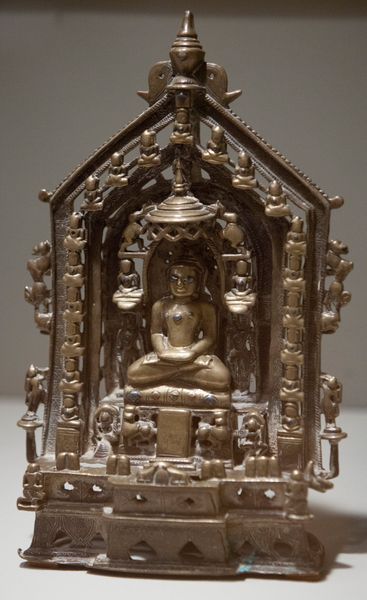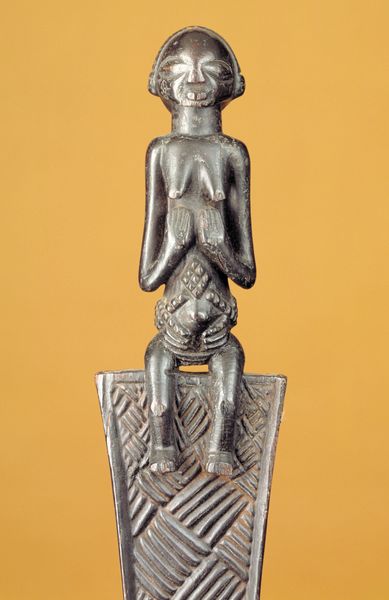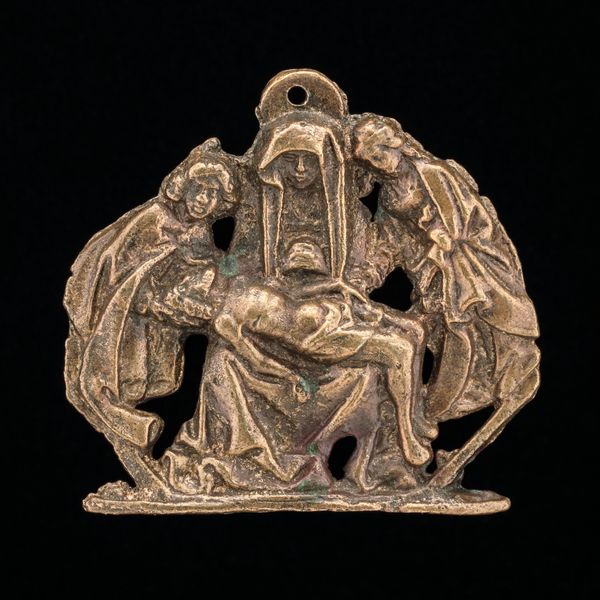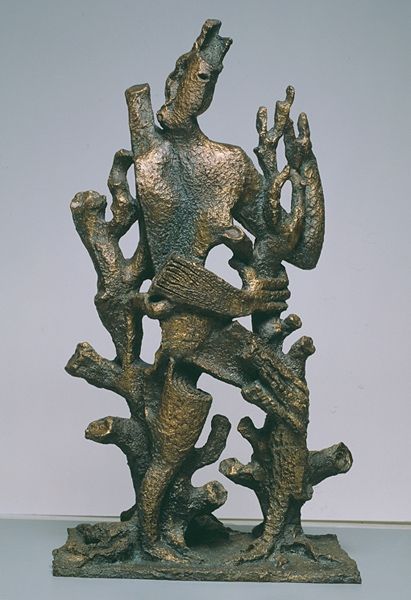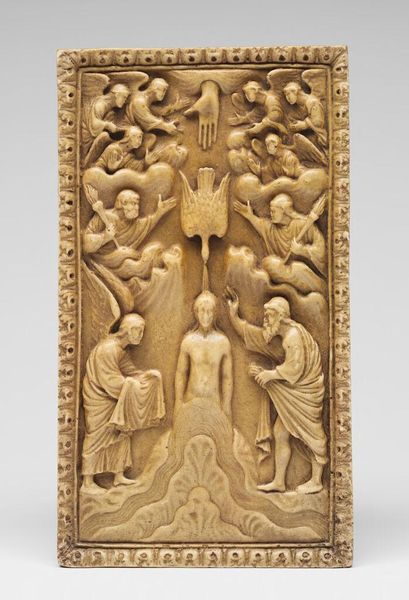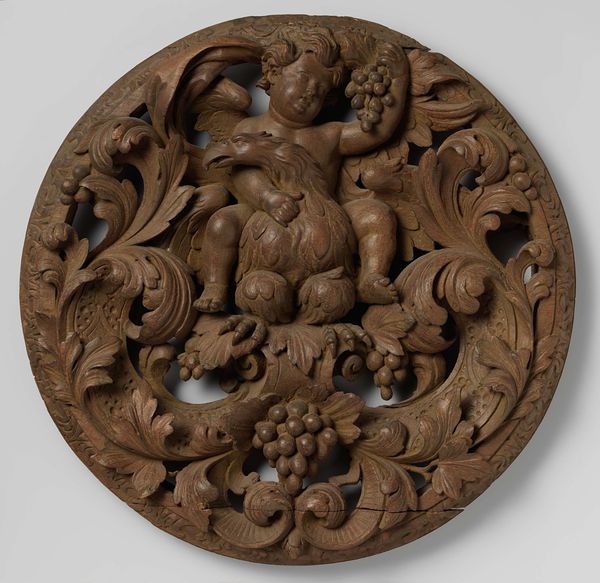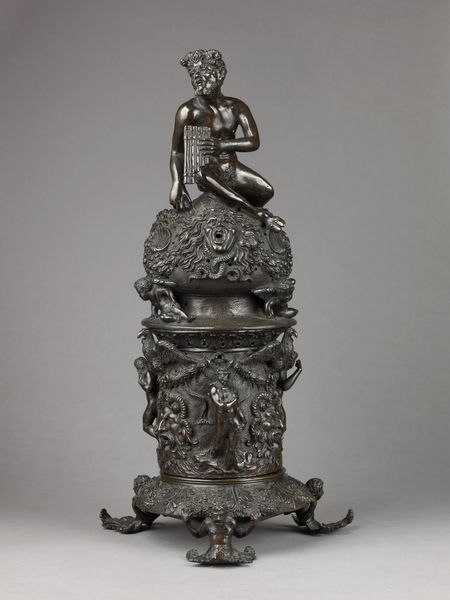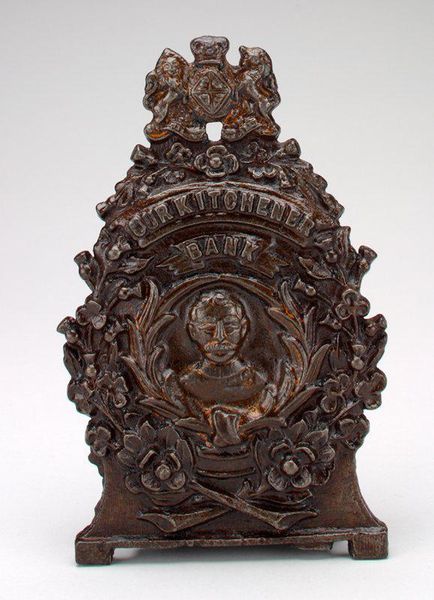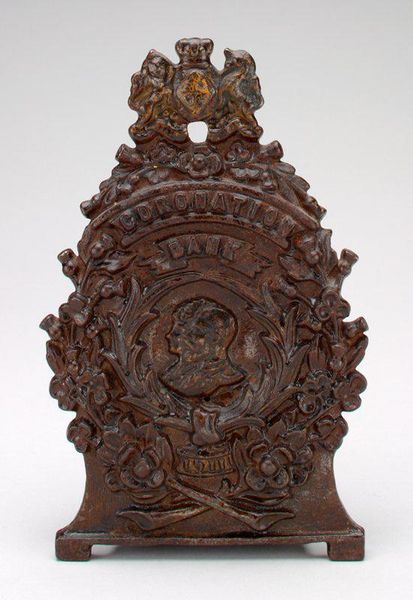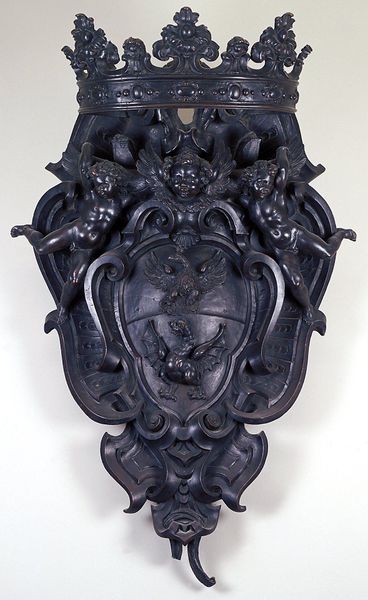
relief, bronze, sculpture
#
portrait
#
sculpture
#
relief
#
bronze
#
11_renaissance
#
sculpture
#
decorative-art
#
italian-renaissance
Dimensions: Overall: 7 3/4 × 4 3/4 in. (19.7 × 12.1 cm)
Copyright: Public Domain
Curator: Here we have "The Assumption of the Virgin", a bronze relief sculpture attributed to Alvise of Padua, dating from the late Renaissance. It resides here at The Met. Editor: It's beautiful. Immediately, I'm struck by the density of the figures and how they all seem to push towards the center, towards Mary. There's such a strong upward visual current. Curator: Indeed. Alvise was active in Padua, and these bronze reliefs, small in scale, were designed for private devotion. Consider the placement – the piece was intended for intimate contemplation, for interaction in private spaces, deeply intertwined with social rituals around religious art. Editor: And that intimacy amplifies the sense of aspiration, doesn't it? Mary, surrounded by cherubic figures, becomes an embodiment of grace and elevation. I'm also thinking about how depictions like this supported societal views of idealized femininity and motherhood during the Renaissance. It almost sets an impossible standard for women within the rigid hierarchies of that time. Curator: Absolutely. Images of the Virgin, especially scenes like the Assumption, played a key role in shaping perceptions of women's roles and piety within Renaissance society. Patronage and commissioning of artworks like this reflect the intricate socio-political web within which art was produced and consumed. This iconography carries with it specific directives and reinforces gendered expectations. Editor: It is intriguing to see the details on the robes. There’s movement in the fabrics that contrasts with Mary's static composure, this invites thoughts about women's prescribed roles of action in motion and the serenity needed. But looking closer, I do wish the cherubic faces were less… homogeneous. A bit more individuality would shift the whole dynamic for me. Curator: These reliefs were often part of a larger decorative scheme; they weren't always meant to stand alone. While we now admire them as standalone artworks, considering their original context adds another layer of understanding to their creation and function. It highlights the importance of patronage and intended display. Editor: Context really shifts everything, doesn’t it? Looking at it now, though, through a contemporary lens, I see how this image might trigger conflicting feelings, particularly for those grappling with the weight of societal expectations, historical roles, and self-expression within these historical constraints. Curator: Precisely. This is precisely the challenge, to contextualize art with respect to identity, gender and society and recognize it is far from neutral. Understanding how these pieces functioned within their historical moment illuminates so much more than just aesthetics, don’t you think? Editor: Definitely. Understanding that relationship between object, function, and historical expectation is vital. It adds a layer to our perception today. Curator: Well, hopefully this inspires more analysis for you during your museum visit!
Comments
No comments
Be the first to comment and join the conversation on the ultimate creative platform.
